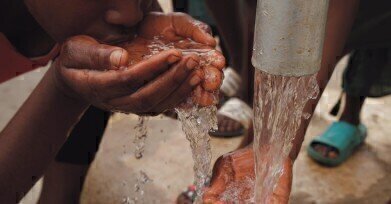Mass Spectrometry & Spectroscopy
What is a Safe Coliform Level?
May 21 2022
Found in water, soil and the faecal matter of warm-blooded animals, Coliform bacteria are used as “indicators” to assess the quality of drinking water. After a sample is collected, laboratory tests reveal what is known as a total Coliform count. This is used to evaluate the cleanliness of the water source and determine if it’s safe for consumption.
The role of Coliform count
Governments and local municipalities around the world rely on Coliform count to monitor drinking water quality and prevent outbreaks of infections such as Escherichia coli (E. coli). With more than 1400 species of water-borne pathogens to test for, targeting individual strains is inefficient and unreliable.
“It is neither physically nor economically feasible to test for all pathogens that may be present in drinking water,” reads a statement released by NSW Health. “For this reason tests are carried out for bacteria, which are present in faeces and indicate contamination of drinking water.”
With a total Coliform count, scientists can detect abnormally high bacteria levels, which can indicate the presence of disease-causing pathogens. As Coliform bacteria are colourless, odourless and tasteless the only way to calculate concentrations is with laboratory tests. In most developed countries, safe Coliform levels are “none detectable” per 100mL sample. This includes the UK, Canada, Australia and the United States. Anything higher is considered a risk and must be investigated.
Improving global water quality
In an article published in the peer-reviewed journal Pathogens, the authors describe waterborne pathogens as a “global concern for worldwide public health”. The article stresses that as a key driver of severe illness and fatalities around the world, “the control, monitoring and application of regulations for water quality are in urgent need.” Coliform testing plays an important role in monitoring water quality and reducing waterborne illnesses around the world.
“Pathogen indicators need to be continually improved since a large number of new emerging pathogens are causing water-related diseases and waterborne outbreaks,” reads the Pathogens article. “The implementation of Quantitative Microbial Risk Assessment (QMRA) needs to be adapted to estimate the level of risk from different pathogens for better understanding of the dynamics of microbial populations in drinking water systems, and to identify the most effective strategies to be implemented to reduce the health risk and to improve water quality.”
Managing the risks of water and foodborne illness
World Vision estimates that waterborne diseases cause more than 3 million global deaths per year. However water isn’t the only source of pathogens. Food is also a major risk, with bacteria such as Salmonella, Norovirus and Campylobacter found in sources such as raw meat, milk and reheated foods. Find out more about the risks and how they can be managed in ‘Bacteria in Food - Types, Testing & Problems’
Digital Edition
Lab Asia 31.2 April 2024
April 2024
In This Edition Chromatography Articles - Approaches to troubleshooting an SPE method for the analysis of oligonucleotides (pt i) - High-precision liquid flow processes demand full fluidic c...
View all digital editions
Events
Apr 28 2024 Montreal, Quebec, Canada
May 05 2024 Seville, Spain
InformEx Zone at CPhl North America
May 07 2024 Pennsylvania, PA, USA
May 14 2024 Oklahoma City, OK, USA
May 15 2024 Birmingham, UK


















